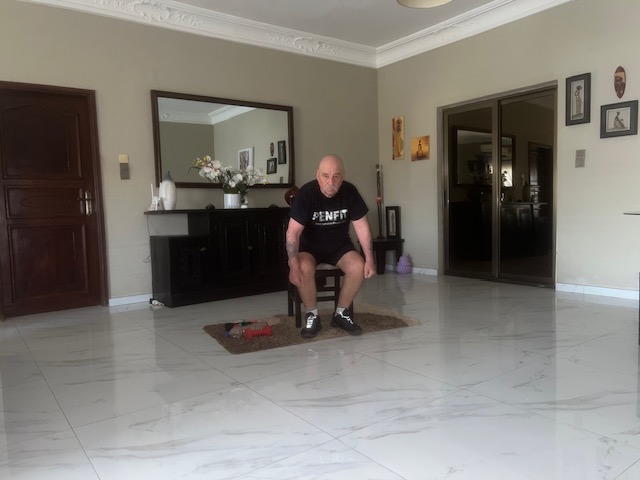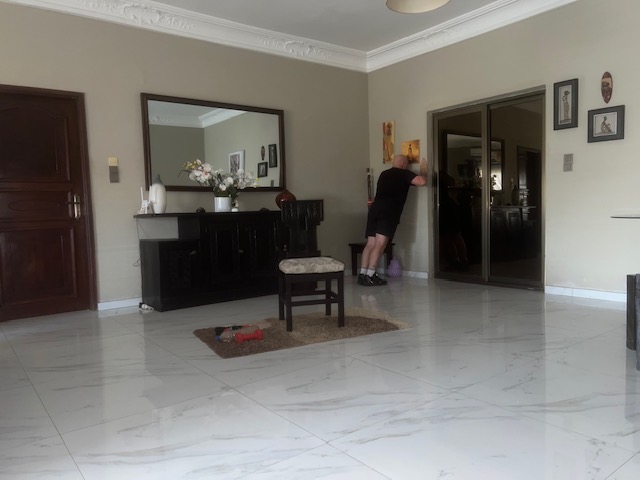
Introduction to Building Real Strength
Building Real Strength. So then, as we age, staying strong becomes more important than ever. Consequently, strong muscles support balance, protect our joints, help prevent falls, and keep us independent. But here’s the truth that many people overlook:
You won’t build strength unless you put effort into your exercises.
Building Real Strength. For example, it’s not about sweating buckets or pushing yourself until you’re sore. However, it’s about doing the right exercises, at the right intensity, and pushing just a little beyond your comfort zone.
Why Effort Matters in Strength Training

Building Real Strength. Subsequently, many older adults start a routine with good intentions. But fall short because they’re not working hard enough to challenge their muscles. Here if an exercise feels too easy, or you stop before your muscles feel “worked,” your body has no reason to adapt. As a result, that means no strength gain, no muscle tone, and no real progress.
Besides, the goal is progressive overload—doing a little more over time, either by increasing repetitions, resistance (such as body weight, resistance bands, or small dumbbells), or time under tension.
✅ Effort builds strength.
🚫 Going through the motions maintains weakness.
The Results You Can Expect (With Consistent Effort)

Building Real Strength. So then, if you’re new to strength exercises and train 3 times per week, using good form and pushing yourself safely:
- In 2–4 weeks: You’ll start to feel firmer, more confident, and may notice better balance.
- In 6–8 weeks: You can expect visible strength gains, more endurance, and easier movement in daily life.
- In 10–12 weeks: You may reduce joint pain, improve posture, and feel noticeably stronger and steadier.
It takes time—but it works every time when done right.
4 Effective Strength-Building Exercises for Older Adults

Building Real Strength. Furthermore, these exercises are safe, require no gym. And use your body weight or basic equipment like a chair or resistance band. Remember: form first, then effort.
1. Chair Squats (Legs, Glutes, Balance)

How to do it:
- Stand in front of a sturdy chair. Lower your body slowly until just touching the seat, then push up through your heels to stand.
Sets & Reps:
- 3 sets of 10–15 repetitions
- Rest 30–60 seconds between sets
Tip: If it feels easy, slow down the motion or add light hand weights.
2. Wall Push-Ups (Chest, Arms, Core)

How to do it:
- Stand arms-length from a wall. Place hands flat and lower your chest to the wall, keeping your body straight. Push back to start.
Sets & Reps:
- 3 sets of 10–15 reps
- Slow and controlled movement
Tip: Move feet further from the wall to make it more challenging.
3. Seated Resistance Band Rows (Back, Shoulders, Posture)

How to do it:
- Sit tall, wrap a resistance band around your feet, and pull the ends toward your waist. Squeeze your shoulder blades together, then release.
Sets & Reps:
- 2–3 sets of 10–15 reps
Tip: Choose a band with enough tension to feel resistance by rep 10.
4. Standing Calf Raises (Lower legs, Stability)

How to do it:
- Stand tall holding onto a counter or wall. Raise your heels slowly, hold for 2 seconds, then lower.
Sets & Reps:
- 3 sets of 12–20 reps
Tip: To progress, do them one leg at a time or add light ankle weights.
🔁 How Often to Train

- Strength training: 2–3 times per week, with at least 1 day of rest between
- Add walking or balance exercises on other days to complement your routine
Final Word: Push, But Don’t Punish
Building Real Strength. Hence, effort should be challenging but not painful. Besides, the goal is to feel your muscles working by the last few reps of each set. Hence, a slight burn, a little fatigue—that’s your signal you’re on track.
The message is clear:
💪 If you want to get stronger, you have to work for it.
🛋️ If it feels easy the whole time, your body won’t change.
By the way, stick with it, and challenge yourself. Generally, your body is capable of much more than you think, And even after 60, 70, or 80. Therefore, real strength brings real freedom, and that ensures independence.
Video
Pensioner Fitness – Helping You Stay Strong, Steady, and Self-Reliant
DONATE
Pensioner Fitness Awards
THE BUSINESS CONCEPT, BEST IN BUSINESS AWARDS
- “MOST INSPIRING SENIOR WELLNESS WEBSITE 2023“
THE GLOBAL HEALTH AND PHARMA, FITNESS AND NUTRITION AWARDS
2. “BEST SENIOR FITNESS AND NUTRITION SPECIALIST 2023“
THE MIDDLE EAST AND AFRICA BUSINESS AWARDS
3. “ MOST INCLUSIVE FITNESS PROVIDER 2023″
THE CORPORATE LIVE WIRE GLOBAL AWARDS 2023/2024
4. ” FITNESS ADVISORY PLATFORM OF THE YEAR“ 2023/2024
In Conclusion
In this case, building real strength after 60 isn’t about fancy workouts. But it is about consistent effort. Here, this post explains why working hard enough matters and offers four simple exercises older adults can do at home. Also, with the right effort, you can expect stronger muscles, with. better balance, and more independence in just a few weeks.
Important Note *
Remember that everyone is different, it is ultimately YOUR RESPONSIBILITY to find what your body responds to. So please do your due diligence before trying anything new, including getting Medical Advice to ensure your safety and peace of mind.
Connect with me and leave a com